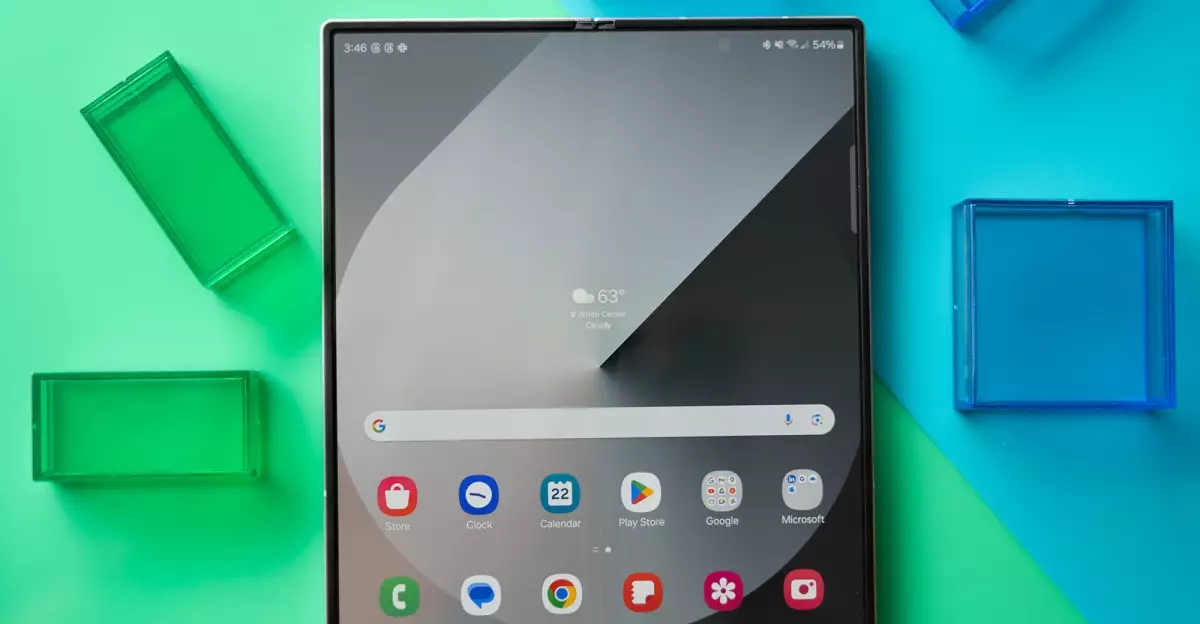Despite the hype surrounding foldable smartphones, consumer enthusiasm hasn’t translated into widespread adoption. Samsung, a dominant force in this niche, continues to push the boundaries, yet sales figures paint a sobering picture: foldables remain an underwhelming segment of the broader smartphone industry. With only about 1.5% of global market share, these devices are more aspirational than habitual for most users. It’s no longer a matter of innovation alone but of convincing a reluctant audience that the benefits outweigh the costs — a challenge Samsung is fiercely attempting to meet.
Criticism of Samsung’s incremental updates highlights a key issue: mere iterations with slight tweaks won’t cut it in a market craving transformative features. Last year’s Galaxy Z Fold 6 and Z Flip 6 were more evolutionary than revolutionary, offering marginal gains. Customers looking for meaningful innovation—such as better durability, improved software, or unique form factors—are left wanting. Samsung’s approach seems to lack the audacity to truly disrupt, hampering its ability to change perception and increase market penetration.
Confronting Cost and Durability Hurdles
One of the persistent barriers to mass adoption is price—foldables have traditionally been expensive, often costing more than $1,500. This premium positioning, combined with durability concerns, discourages the average consumer from making the leap. Foldables, by their nature, are more complex mechanically; dust ingress and accidental damage remain persistent issues that even Samsung’s best efforts haven’t fully solved. The absence of a fully IP68-rated dustproof and waterproof foldable model underscores the industry’s ongoing struggle to create a device that aligns durability with affordability.
High repair costs further compound these problems. Unlike standard flagship devices, which can often be repaired at manageable costs, foldables tend to require specialized components and skills, making repairs expensive and inconvenient. This fragility discourages users, especially when considering such a significant financial investment. As prices for everything else continue to climb, the perceived gamble of purchasing a less durable, more expensive device becomes even less tenable. Consumers are increasingly pragmatic, and without a compelling reason, many remain content with traditional slabs.
The Road Ahead: Can New Hardware Save the Day?
Samsung’s upcoming lineup suggests a strategic push to address core criticisms: introducing the first Ultra-branded foldable, which promises to be thinner and potentially more durable, and expanding foldable options across different price ranges. The anticipated Z Flip 7 with a larger cover display aims to enhance usability, aligning with consumer desires for more practical, flagship-level features. These innovations signal that Samsung understands the market’s pain points — size, weight, and price — and is attempting to rectify them.
However, whether these hardware upgrades will be enough remains uncertain. Consumers who have been cautious to adopt foldables are often most concerned about durability and long-term usability. An improved design might seduce early adopters, but for mass market appeal, Samsung needs to address fundamental issues: making foldables more resilient, more affordable, and less niche.
The Potential Power of Market Expansion
Looking beyond Samsung, the smartphone industry may soon witness a turning point: Apple’s rumored entry into foldables in 2026. An iPhone-style foldable could introduce a new level of appeal, especially in markets like the US where brand loyalty is powerful. Apple’s reputation for durability and user-friendly design could set new standards, forcing Samsung and others to elevate their game substantially.
Such a shift could benefit Samsung indirectly. If the market expands with new entrants and more consumer confidence, Samsung might find a larger audience receptive to its foldable offerings. Diversifying model options across price points and specifications could also help Samsung regain lost ground. The strategy of catering to different segments—ranging from premium Ultra models to more budget-friendly versions—may serve as a catalyst for growth.
The True Test of Flexibility’s Future
In the end, the fate of foldables hinges less on hardware iterations and more on their ability to become practical, durable, and attractive enough to sway mainstream consumers. Samsung’s latest efforts show an understanding of the market’s shortcomings, but the question remains: will these steps be bold enough? The company’s willingness to experiment with new form factors and price segments demonstrates strategic foresight, yet the real challenge is to overcome the tactile hesitations and economic risks that tether many potential buyers.
As the foldable landscape evolves, it is becoming clear that it’s not just about creating a cool gadget but about redefining what a smartphone can be. For Samsung, this means pushing past incremental improvements and truly addressing fundamental consumer concerns. Only then can foldables transition from niche curiosities to essential devices—something that only time and relentless innovation can achieve.


Leave a Reply